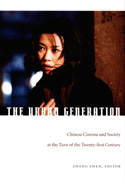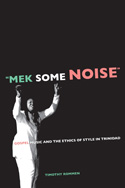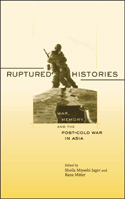Peer Review ::
On the shelf
The Magazine publishes a selection of general-interest books by alumni authors. For additional alumni books, see “In Their Own Words.”
Mi Voz, Mi Vida: Latino College Students Tell Their Life Stories, edited by Andrew Garrod, Robert Kilkenny, and Christina Gomez, AB’85, MBA’87, Cornell University Press, 2007. The transition to college life is difficult for many students, but the writers in this volume—15 Latino students from diverse regional and socioeconomic backgrounds—had to adapt to Ivy League educational and cultural environments that were poles apart from their childhood upbringings. The stories, from young men and women of Mexican, Puerto Rican, Cuban, Dominican, Central American, and South American descent, illuminate struggles with identity and biculturalism, family dynamics, religion, poverty, stereotypes, and the value of education.

The Urban Generation: Chinese Cinema and Society at the Turn of the Twenty-first Century, edited by Zhang Zhen, PhD’98, Duke University Press, 2007. Aimless bohemians, prostitutes, taxi drivers, migrant workers: these are some of the city-dwelling characters who inhabit the films of China’s Urban Generation, a vanguard cinema begun in the early 1990s. In the wake of Tiananmen Square, young filmmakers emerged with an alternative to China’s state-owned movie studios, engaging the confusion and anxiety sparked by economic and social change. The contributors, including Jason McGrath, AM’01, PhD’04, explore the Urban Generation’s rise and development.
Back Pain Understood: A Cutting-Edge Approach to Healing Your Back, by Brian Hainline, MD’82, Medicus Press, 2007. Hainline explores not only the physiological reasons behind low-back pain but also the role of thought and emotion, emphasizing the mind-body interaction in chronic pain. Discussing nine types of low-back syndromes, Hainline gives definitions, causes, and mind-body considerations for each, also suggesting medications, surgical options, and nonsurgical treatments.

“Mek Some Noise”: Gospel Music and the Ethics of Style in Trinidad, by Timothy Rommen, PhD’02, University of California Press, 2007. Caribbean music and Christianity meet in this ethnographic study of Trinidad and Tobago’s Full Gospel community. Despite the secular connotations of Trinidadian music, Rommen argues, Full Gospel Christians, a loose grouping that includes several Pentecostal denominations, use music as a way to negotiate their convictions within the church. Looking at four musical styles, the author investigates how making and performing music places Christian faith in a Trinidadian context.
Before, Between, and Beyond: Three Decades of Dance Writing, edited by Sally Banes, AB’72, University of Wisconsin Press, 2007. American contemporary dance critic and scholar Banes compiles a career’s worth of writing—from her first published essay to previously unpublished papers—for this volume. Her work, which balances history, description, and opinion to place dance styles in the American cultural scene, focuses on several artistic forms, including experimental art, disco dancing, and choreographer George Balanchine’s ballet for circus elephants.

Ruptured Histories: War, Memory, and the Post–Cold War in Asia, edited by Sheila Miyoshi Jager, PhD’94, and Rana Mitter, Harvard University Press, 2007. At the cold war’s end, many East Asian states experienced a nationalistic upsurge, affecting U.S. security policy in the Pacific. The contributors—including Daqing Yang, AM’90, Yoshikuni Igarashi, PhD’94, James L. Hevia, PhD’86, and Charles K. Armstrong, PhD’94—examine how East Asian nations have reassessed their roles in the 20th-century wars, from WW II to Vietnam. South Korea, for example, has reinterpreted the Korean War in a way that is hostile to the United States and sympathetic to its North Korean adversaries. With these local and global changes that challenge the post–cold war world order, the editors argue, come the need to rethink the shape of U.S.–East Asian relations.
The Age of Independence: Interracial Unions, Same-Sex Unions, and the Changing American Family, by Michael J. Rosenfeld, AM’91, PhD’00, Harvard University Press, 2007. Why has the picture of marriage and family composition in the U.S., with increasing numbers of interracial and same-sex unions, changed so dramatically since the 1960s? Rosenfeld argues that the rise of the “independent life stage”—when children no longer live with their parents but have not yet started families—reduces parental control over dating, and new kinds of unions emerge. Using census data from 1850 to 2000, as well as interviews with contemporary couples and families, the author provides a new perspective on the American family’s transformation.
The Chicago River: A History in Photographs, by Jonathan Genzen, PhD’02, MD’04, Westcliffe Publishers, 2007. Chicago’s urban landscape has always distinguished it from other U.S. cities. This book explores the Chicago River’s early significance as a water source and trade route, its longtime use as a sewage dumping ground, the advances in architectural design and construction techniques that changed the riverfront, and the disasters (such as the Great Fire of 1871) that occurred along its banks. Through more than 110 photographs and images, Genzen traces the city’s development along the river that bears its name.